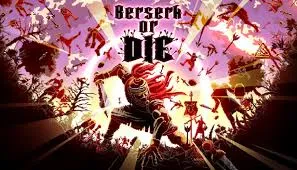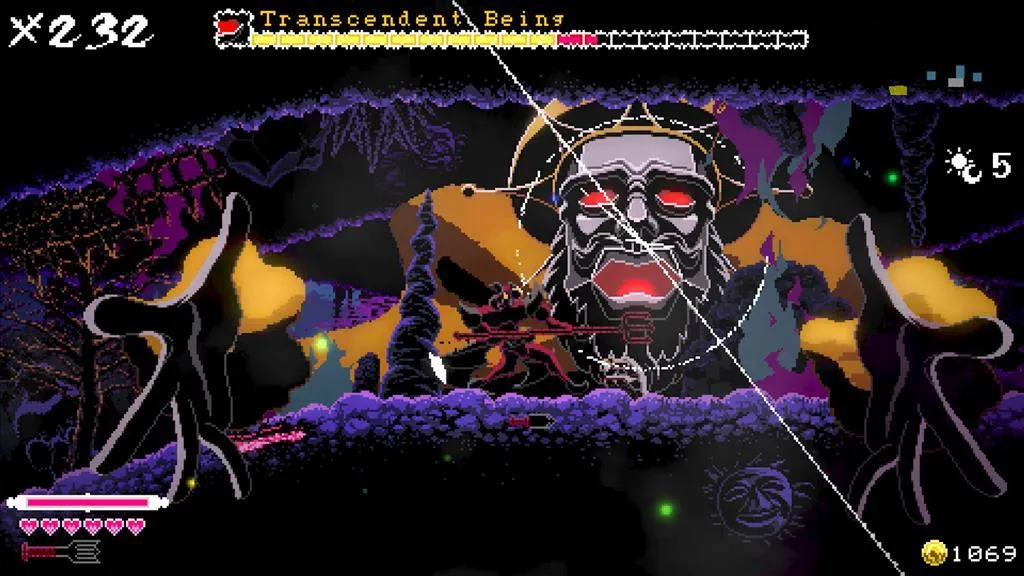
Berserk or Die Preview: Bizarre Controls, Satisfying Core
A hands-on preview of Berserk or Die, exploring its unique keyboard-mashing mechanics, satisfying combat effects, and rich unlockable content in this 2D pixel art action slasher from poncle and Nao Games.
Without a doubt, Vampire Survivors, which burst onto the scene over two years ago, is a true small-scale masterpiece built around pure game mechanics and gameplay enjoyment. With simple graphics and monotonous controls, it possesses that magical charm that makes you want to try again and again, catapulting its developer poncle to fame. Now poncle has transformed into a game publisher, releasing this 2D pixel art action slasher called Berserk or Die, developed by Nao Games. The game’s core selling point revolves around simple yet bizarre “keyboard mashing” controls (though controllers and mouse are also supported), combined with satisfying combat effects and rich unlockable content. While the gameplay differs significantly, the core mechanical design philosophy is identical to Vampire Survivors—if you didn’t know this was a published title beforehand, many might mistake it for a new poncle development.

Who Said These Controls Are Simple? These Controls Are Amazing!
The game initially offers 5 progressively unlockable levels plus a training ground, each representing different battlefield themes: Plains (Ancient Rome), Desert (Ancient Egypt), Forest (Aztec), Samurai Mansion (Japan), Mountains (Ancient China), and the hidden Hell map.
All maps extend infinitely left and right following player movement, with the system randomly generating terrain based on the level theme. However, players and enemies always fight on the same height and plane, so you don’t need to worry about getting stuck in dead ends.
Once you select a map and enter, combat officially begins. The protagonist stands in the center of the screen while enemies continuously pour in from both sides, rushing toward the player. They either use melee weapons like spears, swords, and boulders, or shoot arrows and throw bombs. Players must constantly eliminate them, or they’ll quickly exhaust their initial 3 HP and face game over.
Unique Control Design
What makes this game’s control design special is the absence of traditional “character movement” functionality. Players can only control the protagonist to attack left or right by tapping specific areas of the keyboard, moving and clicking the mouse, or pressing corresponding controller buttons, generating slight displacement through these attacks. Each attack consumes one stamina bar segment, and stamina recovery speed is affected by weapon weight and different character traits, making attack rhythm extremely important. Mindlessly mashing attack buttons will only trap your character in heavy encirclement.
Additionally, characters have left and right defense capabilities to block ranged attacks or reduce melee damage. Finally, filling the special meter allows you to unleash powerful ultimate attacks—these are all the game’s controls. Different selectable characters have completely different appearances, weapons, stamina bar rules, and special abilities, with some having built-in skills like rapid stamina recovery through consecutive attack button presses. While basic operation rules remain the same, the actual gameplay experience feels significantly different, and experiencing these differences with various characters is a key aspect of Berserk or Die’s replayability.

Attacks are divided into light, medium, and heavy categories, with stamina recovery speeds ranging from fast to slow correspondingly, matching attack displacement distances from near to far. Heavy attacks can generally send characters flying from one end of the screen to the other while executing wide-range attack motions, making them very effective against large groups of enemies.
However, heavy attacks have noticeable startup and recovery times, with longer stamina recovery periods, making you vulnerable during dense enemy attacks. From a cost-effectiveness perspective, it’s still worth the risk, as light and medium attacks in the current version have smaller damage ranges and shorter displacement distances, making them inadequate for collecting coins or attacking large enemy groups compared to heavy attacks.
Combat Progression and Economy
Initial enemies have very low HP and die in one hit from any player attack, but as combat progresses, enemies with more attack methods and higher HP gradually appear—detailed enemy data can be viewed in-game.
Killed enemies randomly drop silver coins worth 1 money or gold coins worth 10 money, which players must collect through attack displacement. When the in-game time bar moves from left to right, it signals nightfall and the end of that day’s combat. All enemies immediately retreat, and a merchant jumps out to automatically trade with the player.
Here, players can spend gold coins to purchase temporary buff items that only affect the current game session. There’s a wide variety of buffs that must be unlocked by meeting various conditions through continuous play, including increasing HP limits, throwing swords during attacks, brief invincibility when collecting coins, and of course, basic healing items.
After purchasing, combat enters the second day, continuing this cycle with increasing enemy density and strength each day. Surviving to the fifth day introduces the map’s first batch of powerful enemies, indicated by yellow health bars at the top of the screen—it’s best to use ultimate attacks to quickly reduce their numbers or HP. Defeating powerful enemies not only yields substantial money but usually drops treasure chests containing weapons for your current character, with completely random attributes and skills. The system rates weapons with star rankings based on their abilities. Generally, rarer chest materials are more likely to yield better equipment, though it depends on whether the specific stats and special skills match your needs.
Late Game Challenges
Generally, after reaching the fifth day, enemy appearance frequency and ranged attack density increase dramatically. While characters usually accumulate temporary buffs by this point, preventing immediate death, battles become increasingly perilous. You must have precise control over attack and defense timing, as well as character displacement rhythm to avoid damage. Continuing with the previous chaotic button-mashing approach typically won’t survive past the tenth day.
Beyond the game’s inherent difficulty, late-game stages suffer from overly complex and dense visual effects. Every hit features “hit-stop” design, severely slowing the entire screen and making it nearly impossible to see where the protagonist is located. Even setting light effects to minimum only slightly alleviates the stuttering.
After each session ends, the system awards permanent experience points based on player performance and progress to enhance character base abilities. Initially, few enhancement options are available, but more unlock later. Meeting conditions like killing specific numbers of certain enemies or destroying special items gradually unlocks new shop items, characters, or scenes. The game features 103 total achievements corresponding to 103 unlockable content pieces, suggesting substantial time-sink potential.
Hard Mode and Replayability
If normal mode leaves you wanting more, each level offers “Hard Mode” with extremely fast-moving enemies appearing more frequently. Within days, the entire screen fills with enemies and their attack effects, creating truly chaotic scenes. Naturally, this mode offers higher money and permanent experience rewards, perfect for players who enjoy challenging themselves.
Final Thoughts
After playing Berserk or Die for several days, it’s clear why poncle chose this game product. Behind the minimalist controls and seemingly ordinary gameplay lies incredibly rich variation. While exaggerated visual effects become somewhat overwhelming in mid-to-late stages, they effectively amplify combat satisfaction. Combined with one-button combat operations, no matter how chaotic the screen becomes, it never feels tedious—very similar to my experience with Vampire Survivors years ago. Especially when switching to newly unlocked late-game characters, the entire operational rhythm and habits change completely, yet the satisfying feeling remains maximally preserved. Continuously unlocking new elements provides ample motivation to keep playing.
The preview version we tested supports Chinese subtitles but often fails to display them, including blank item descriptions in level shops, which is quite frustrating—I had to play entirely in Japanese. Additionally, I encountered 2-3 severe crash bugs during gameplay, all occurring during late-stage combat with dense effects, causing complete loss of session rewards. These are obviously issues that need urgent resolution before official release.
However, regarding the game itself, it remains a creative, content-rich small-scale masterpiece that becomes addictive once you start playing. It’s perfect for killing time and experiencing the endless combat satisfaction that simple controls can provide.
